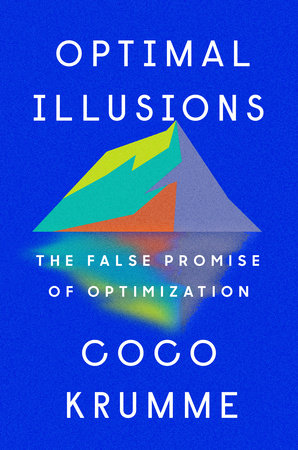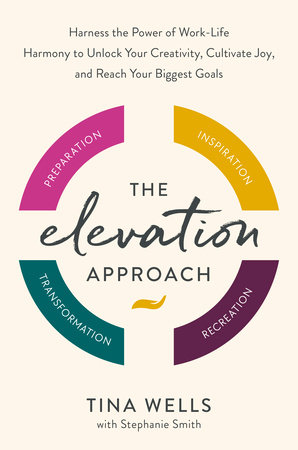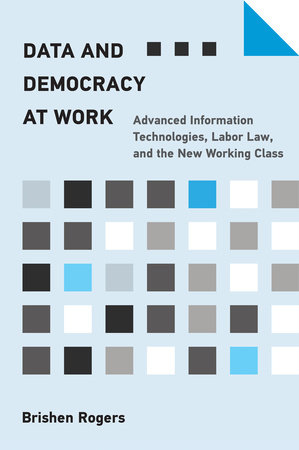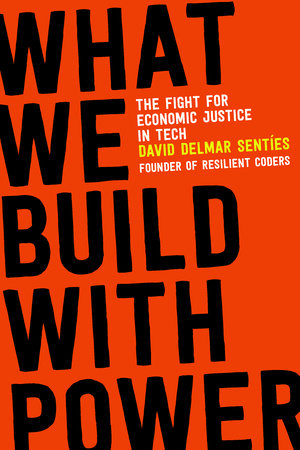Quick Summary
One Sentence Summary
“Future Crimes” by Marc Goodman is a thought-provoking exploration of the dark side of technology and how it can be exploited for criminal purposes.
Big Idea
The central theme is the increasing vulnerability in our digital age, where advancements in technology, while beneficial, also open doors for unprecedented types of crime and security challenges.
Five Key Ideas
- Digital Vulnerability: Illustrates how our dependence on technology makes us susceptible to cyber-attacks.
- Evolution of Crime: Describes how criminals use technology, from simple hacking to sophisticated cyber-terrorism.
- Data as a Weapon: Discusses how personal data can be exploited for criminal purposes.
- Law Enforcement Challenges: Explores the difficulties law enforcement faces in combating tech-savvy criminals.
- Future Threats: Projects potential future crimes as technology continues to evolve, including AI and biotechnology risks.
Actionable Advice
- Stay Informed: Keep up-to-date with the latest security measures for your devices and online activities.
- Protect Your Data: Use strong, unique passwords and be cautious about sharing personal information.
- Be Proactive: Regularly update software and use reputable security tools to guard against cyber threats.
About the Author
Marc Goodman is a global strategist, author, and consultant focused on the disruptive impact of advancing technologies on security, business, and international affairs.
Read Next
- “The Art of Deception” by Kevin Mitnick, for insights into social engineering and security.
- “Ghost in the Wires” by Kevin Mitnick, exploring the world of hacking from a former hacker’s perspective.
- “The Age of Surveillance Capitalism” by Shoshana Zuboff, for a broader view on data privacy and corporate practices in the digital era.
In Depth
Digital Vulnerability
In “Future Crimes,” Marc Goodman paints a vivid picture of how our increasing reliance on digital technologies has made us more vulnerable than ever to cyber threats. As we integrate technology into every aspect of our lives, from smart homes to online banking, we create more entry points for cybercriminals. This key idea revolves around the paradox that while technology simplifies our lives, it also complicates our safety.
A detailed example from the book illustrates this vulnerability. Goodman discusses the Stuxnet worm, a sophisticated piece of malware designed to target Iran’s nuclear program. This cyber weapon managed to infiltrate and cause significant damage to the uranium enrichment facility in Natanz. What makes this incident particularly alarming is not just the scale of the attack but how it represents a new era of cyber warfare where digital tools can cause physical destruction.
Goodman emphasizes this point, saying:
“In the past, to destroy a country’s infrastructure, you needed bombs, planes, and missiles. Today, all it takes is a few lines of code.”
The Stuxnet example is a wake-up call. It demonstrates that our critical infrastructures, such as power grids, water supply, and transportation systems, are not just physically vulnerable but also digitally. The interconnectedness of these systems with the internet has opened up opportunities for cybercriminals to exploit.
Goodman delves into how the Internet of Things (IoT) exacerbates this vulnerability. With billions of devices connected to the internet, from fridges to fitness trackers, the attack surface for cybercriminals has expanded exponentially. Each connected device, often lacking proper security measures, can serve as a potential entry point for hackers.
The book also touches upon the personal implications of digital vulnerability. Our smartphones, for example, carry a wealth of personal information. Goodman warns that these devices are not just phones but portable tracking devices. Cybercriminals can exploit this data for identity theft, financial fraud, or even physical stalking.
In the realm of businesses, Goodman highlights that organizations are equally at risk. From small startups to multinational corporations, cyber-attacks can lead to data breaches, financial losses, and reputational damage. He points out that it’s not a matter of if but when a company will face a cyber threat.
The concept of digital vulnerability outlined in “Future Crimes” is a crucial wake-up call. It underscores the need for individuals, businesses, and governments to take cybersecurity seriously. In a world increasingly reliant on digital technology, understanding and mitigating these risks is not just a precaution—it’s a necessity.
Evolution of Crime
The second key idea in “Future Crimes” revolves around how crime has evolved with technological advancements. Marc Goodman delves into how traditional crimes have transformed in the digital era, with criminals exploiting technology to commit offenses that are more sophisticated, difficult to trace, and far-reaching than ever before.
One detailed example from the book is the concept of “Crime as a Service” (CaaS). Goodman explains how the dark web has made it possible for criminals to offer illegal services in a marketplace setting, similar to legitimate e-commerce sites. These services range from selling stolen credit card information to offering hacking services. This shift means that now, even individuals with minimal technical skills can become cybercriminals by simply purchasing these services.
Goodman highlights the seriousness of this evolution, stating:
“The democratization of technology has democratized crime. Cyber tools and techniques once available only to nation-states are now in the hands of the angry young hacker and the criminal entrepreneur.”
This quote underscores a pivotal shift in the criminal landscape. The barrier to entry for committing cybercrimes has been drastically lowered. It’s no longer just about lone hackers; it’s about organized criminal networks leveraging technology to scale their operations globally.
Another aspect of this evolution is the rise of cyber warfare and espionage. Goodman discusses how nation-states are increasingly using cyber capabilities to conduct espionage, steal intellectual property, and even potentially disrupt other countries’ critical infrastructure. This state-sponsored cyber activity represents a significant shift in international relations and national security.
Phishing attacks are another evolution of crime discussed in the book. Goodman illustrates how criminals use deceptive emails and websites to steal personal information. These attacks, often sophisticated and highly targeted, prey on human psychology and trust, making them particularly dangerous.
The impact of this evolution is profound. Cybercrimes can affect millions of people across the globe, cause billions in economic damage, and even threaten national security. Goodman emphasizes the need for a proactive and collaborative approach to combat these evolved crimes, involving individuals, businesses, and governments working together to enhance cybersecurity measures and share intelligence.
The idea of the evolution of crime in “Future Crimes” serves as a crucial insight into the changing nature of criminal activity in the digital age. It’s a call to action for everyone to adapt and strengthen defenses against these evolving threats.
Data as a Weapon
The third key idea in Marc Goodman’s “Future Crimes” is the concept of data being used as a weapon. In today’s digital age, data is not just information; it’s a valuable commodity that, when misused, can be incredibly damaging. Goodman delves into how personal data can be exploited for criminal purposes, painting a stark picture of the vulnerabilities in our data-driven society.
A striking example from the book is the Target data breach in 2013. Goodman outlines how hackers infiltrated Target’s systems and stole the credit and debit card information of approximately 40 million customers. This breach didn’t just result in financial losses; it also eroded consumer trust and damaged the company’s reputation. Goodman uses this incident to demonstrate how data breaches can have far-reaching consequences beyond immediate financial loss.
Goodman underscores the gravity of this issue, stating:
“Your personal data is the most valuable commodity in the digital age. In the wrong hands, it can be turned against you in devastating ways.”
This quote encapsulates the essence of the idea that data can be a weapon. It’s not just about the unauthorized access to personal information; it’s about the potential harm that can ensue. Identity theft, financial fraud, and even reputational damage are possible outcomes when personal data is misused.
Goodman goes further, discussing how data isn’t just a target for cybercriminals; it’s also a tool. He explores the concept of “big data” and how the aggregation of large data sets can be used for both legitimate and illegitimate purposes. On the darker side, it can be used for mass surveillance, manipulating public opinion, or even for predictive policing, raising ethical and privacy concerns.
Another dimension of data as a weapon is its use in social engineering attacks. Goodman illustrates how criminals can use personal information gleaned from social media or other sources to craft highly targeted and convincing phishing attacks. These attacks can lead to further data breaches, creating a vicious cycle of vulnerability and exploitation.
Goodman’s exploration of data as a weapon is a sobering reminder of the double-edged nature of our digital lives. While data can be used to enhance services and experiences, its misuse can have dire consequences. This key idea calls for greater awareness and more robust measures to protect personal data, emphasizing the shared responsibility between individuals, organizations, and governments to safeguard this valuable asset in the digital age.
Law Enforcement Challenges
In “Future Crimes,” Marc Goodman delves into the significant challenges law enforcement faces in the digital age. As crime evolves and becomes more sophisticated due to technology, traditional policing methods struggle to keep pace. Goodman paints a picture of an ongoing battle between law enforcement agencies and tech-savvy criminals, emphasizing the need for innovation and adaptation in crime-fighting strategies.
A detailed example Goodman provides is the Silk Road case. Silk Road was an online black market, infamous for selling illegal drugs and other illicit goods. It operated on the dark web, making it challenging for law enforcement to track. Goodman describes how the FBI eventually took down Silk Road, but not without considerable effort and adaptation of their usual investigative methods. This case illustrates the complexities and difficulties law enforcement encounters when dealing with crimes in the digital realm.
Goodman emphasizes the gravity of this challenge:
“Policing in the age of the Internet requires a fundamental rethinking of traditional law enforcement methods. The rules of the game have changed, and so must the players.”
This quote underlines the urgent need for law enforcement agencies to evolve. Cybercrime knows no borders; it’s global, anonymous, and often untraceable. Law enforcement agencies must deal with jurisdictional issues, anonymity tools, and the sheer speed and scale of online crimes.
Goodman also discusses the challenge of the “encryption debate.” While encryption is crucial for privacy and security, it also poses significant hurdles for law enforcement in accessing crucial information during investigations. Goodman argues for a balanced approach that respects individual privacy while enabling law enforcement to perform their duties effectively.
Another aspect of law enforcement challenges highlighted in the book is the resource and skills gap. Many police departments lack the necessary resources and technical expertise to combat sophisticated cybercrimes. Goodman points out that while criminals are quick to adopt new technologies, law enforcement often lags due to budget constraints, bureaucracy, and a shortage of skilled personnel.
To overcome these challenges, Goodman suggests closer collaboration between law enforcement, technology companies, and other stakeholders. He advocates for better training, more resources, and international cooperation to tackle cybercrime effectively.
The key idea of law enforcement challenges in “Future Crimes” highlights the ongoing struggle to adapt to the new landscape of digital crime. It underscores the need for innovative solutions, cross-border collaboration, and continuous learning to keep up with the ever-evolving nature of cyber threats.
Future Threats
In the final key idea of “Future Crimes,” Marc Goodman explores the potential future threats as technology continues to advance. He delves into how emerging technologies, while promising immense benefits, also present new and potentially more dangerous opportunities for criminal exploitation. This part of the book serves as a forward-looking warning, urging us to consider the darker implications of technological progress.
A particularly compelling example from the book is the potential misuse of artificial intelligence (AI). Goodman discusses how AI, with its capabilities for learning and autonomous decision-making, could be weaponized by cybercriminals. He paints a scenario where AI could be used for sophisticated hacking, creating malware that learns and adapts to defenses, making it extremely difficult to combat.
Goodman cautions:
“As we delegate more of our lives to machines, we must consider the vulnerabilities we introduce. The potential for AI to be used maliciously is a stark reminder of the dual-use nature of technology.”
This quote emphasizes the need for caution and ethical consideration as we advance into an AI-driven future. The dual-use nature of AI – its potential for both good and harm – is a central concern.
Another future threat discussed is the realm of biotechnology. Goodman explores how advancements in genetic engineering and synthetic biology could be misused. The prospect of biohacking, where individuals could create harmful biological agents in home laboratories, presents a terrifying new frontier for crime and terrorism.
Goodman also touches on the increasing interconnectivity of the world through the Internet of Things (IoT). As more devices become connected, the potential for large-scale attacks on infrastructure increases. Goodman warns of a future where a cyberattack could not just steal data but also cause physical harm by compromising critical systems like power grids or transportation networks.
To mitigate these future threats, Goodman emphasizes the importance of foresight and proactive measures. He advocates for the development of secure and resilient technologies, ethical guidelines for emerging tech, and increased collaboration between governments, industry, and academia to address potential threats before they materialize.
The key idea of future threats in “Future Crimes” is a call to action. It’s a reminder that with every technological leap forward, we must consider the potential risks and prepare accordingly. This forward-looking perspective is crucial in ensuring that we harness the benefits of technology without falling victim to its darker possibilities.
Actionable Advice
- Stay Informed: Keep up-to-date with the latest cybersecurity trends and threats.
- Use Strong Passwords: Implement complex, unique passwords for different accounts.
- Update Regularly: Regularly update software and systems to patch vulnerabilities.
- Secure Personal Data: Be cautious about sharing personal information online.
- Backup Data: Regularly backup important files and data to secure locations.
- Educate Yourself: Learn basic cybersecurity principles and safe online practices.
- Enable Two-Factor Authentication: Add an extra layer of security to your accounts.
- Beware of Phishing: Stay alert to suspicious emails and messages.
- Secure Home Networks: Use strong encryption and passwords for Wi-Fi networks.
- Report Suspicious Activity: If you suspect a cybercrime, report it to authorities.
- Use Antivirus Software: Install and maintain reliable antivirus software.
- Limit Social Media Exposure: Be mindful of what you share on social platforms.
- Support Legislation: Advocate for stronger cybersecurity laws and regulations.
- Collaborate and Share: Work together with others to share knowledge and best practices.
About the Author
Marc Goodman is a renowned cybersecurity expert and speaker, with a career spanning law enforcement, technology, and futurism. He served as a street police officer, later moving into cybercrime and terrorism with the FBI. His global perspective was further shaped by roles with the United Nations and Interpol. Goodman founded the Future Crimes Institute, focusing on the intersection of technology and security. His work and insights into digital technology’s dark side are sought after worldwide. As an author, his best-known work is “Future Crimes,” a New York Times bestseller, where he explores the perils of technology’s rapid advancement. Goodman passionately advocates for ethical technology use and proactive measures against digital threats. His belief in the power of collaboration across sectors to tackle cyber threats is a recurring theme in his work. Through his writing and speaking, Goodman aims to educate and prepare society for the challenges of a technology-driven future.
Read These Next
You might like these similar books
- “The Art of Invisibility” by Kevin Mitnick
- “Ghost in the Wires” by Kevin Mitnick
- “Cybersecurity and Cyberwar: What Everyone Needs to Know” by P.W. Singer and Allan Friedman
- “Spam Nation: The Inside Story of Organized Cybercrime—from Global Epidemic to Your Front Door” by Brian Krebs
- “The Age of Surveillance Capitalism: The Fight for a Human Future at the New Frontier of Power” by Shoshana Zuboff
FAQ
Q: What is ‘Future Crimes’ about?
A: The book explores the dark side of technology, focusing on how criminals exploit digital advancements for illegal activities.
Q: Who is the author?
A: Marc Goodman, a cybersecurity expert and former law enforcement officer.
Q: Is the book suitable for people without a tech background?
A: Yes, it’s written in accessible language, making complex topics understandable for a general audience.
Q: Does the book offer solutions to the problems it discusses?
A: Yes, it provides actionable advice on how individuals and organizations can protect themselves against digital threats.
Q: Are real-world examples included in the book?
A: Yes, the author uses various case studies and real incidents to illustrate his points.
Q: Is ‘Future Crimes’ relevant for today’s technology landscape?
A: Absolutely, the book’s insights into digital security are increasingly relevant in our technology-driven world.
Q: Does the book discuss future technological threats?
A: Yes, it delves into potential future risks associated with emerging technologies.







